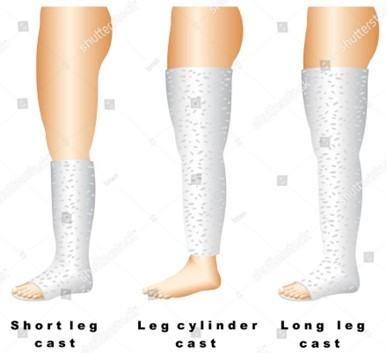A nurse enters the room of a school-age child and finds them on the floor experiencing a tonic-clonic seizure. Which of the following actions should the nurse take?
Turn the child onto their back.
Restrain the child's upper extremities.
Place a padded tongue blade in the child's mouth.
Place a pillow under the child's head.
The Correct Answer is D
The correct action to take in this situation is to place a pillow or cushion under the child's head.
This will help protect the child from injuring their head during the seizure.
It is important not to turn the child onto their back during a seizure, as this can obstruct the airway and potentially lead to respiratory distress.
Restraining the child's upper extremities is also not recommended, as it can cause injury to the child or the person trying to restrain them.
Placing a padded tongue blade or any object in the child's mouth is no longer recommended during a seizure. Doing so can cause injury to the child's mouth or teeth and is not necessary for seizure management.
Nursing Test Bank
Naxlex Comprehensive Predictor Exams
Related Questions
Correct Answer is C
Explanation
Diminished pulses on the affected extremity. This finding may indicate compromised circulation, which is
a serious complication that requires immediate intervention.
Option a. Ecchymosis on the inner left thigh may be a concerning finding, but it is not as urgent as diminished pulses. Ecchymosis may be a result of trauma during cast application and may resolve on its own.
Option b. One fingerbreadth of space between the cast and the skin is a normal finding and indicates that the cast is not too tight.
Option d. Client report of muscle spasms of the left leg is a common complaint in clients with casts and may
be addressed with medication or other interventions, but it is not as urgent as diminished pulses.

Correct Answer is C
Explanation
A.While increasing dietary fiber can help with constipation, a common side effect of iron supplements, it does not directly improve the absorption of the medication
B.Berries and citrus fruits, on the other hand, are good sources of vitamin C, which can actually enhance iron absorption. Therefore, eliminating them from the diet would not be beneficial for improving iron absorption.
C.The recommendation the nurse should make to improve the absorption of the iron supplement (ferrous sulfate) is to avoid drinking milk with the medication. Calcium in milk can interfere with the absorption of iron, so it is best to separate the consumption of these two substances.
D.Green tea contains compounds called tannins, which can interfere with iron absorption. Therefore, it is not recommended to take iron supplements with green tea.
Whether you are a student looking to ace your exams or a practicing nurse seeking to enhance your expertise , our nursing education contents will empower you with the confidence and competence to make a difference in the lives of patients and become a respected leader in the healthcare field.
Visit Naxlex, invest in your future and unlock endless possibilities with our unparalleled nursing education contents today
Report Wrong Answer on the Current Question
Do you disagree with the answer? If yes, what is your expected answer? Explain.
Kindly be descriptive with the issue you are facing.
